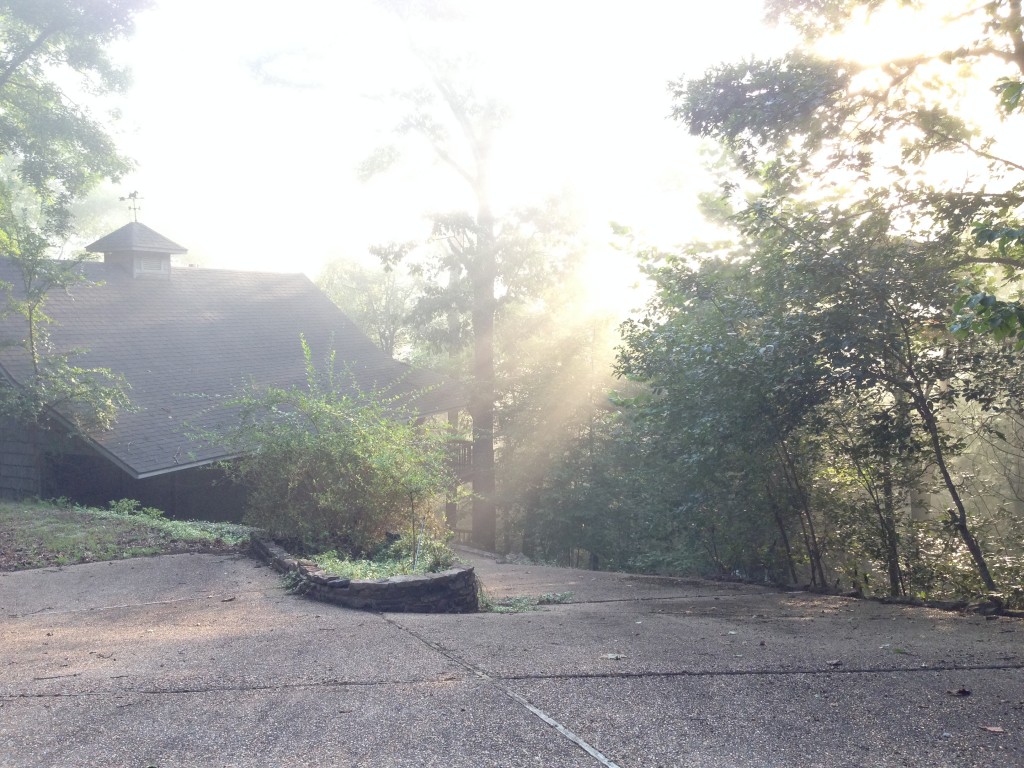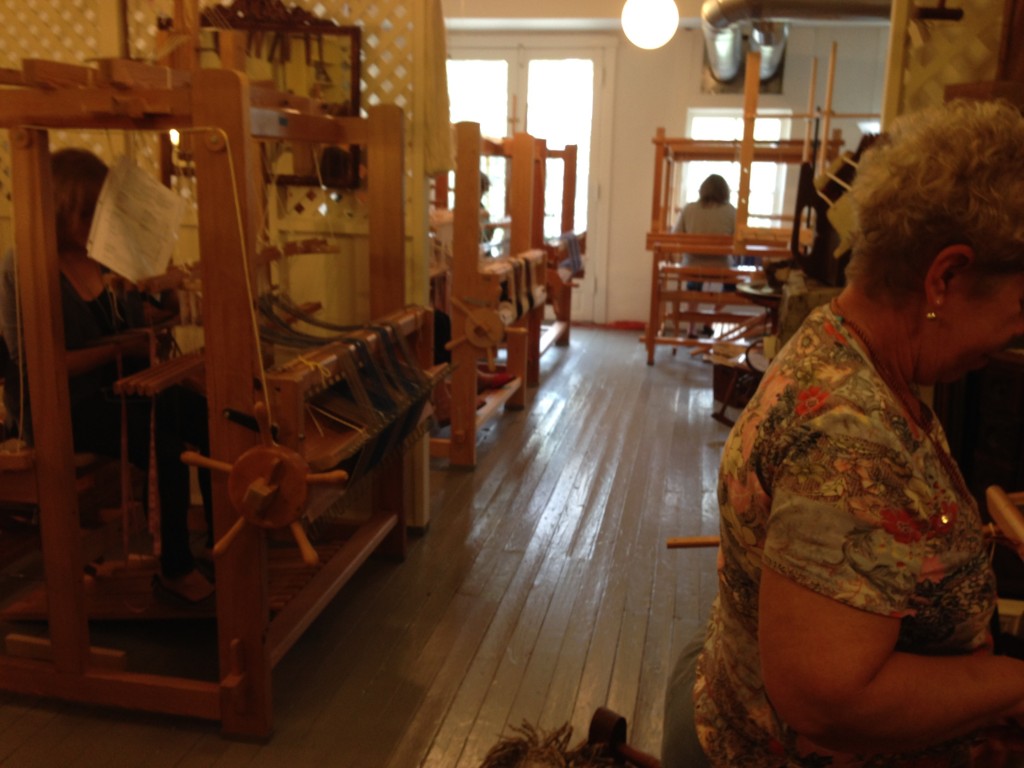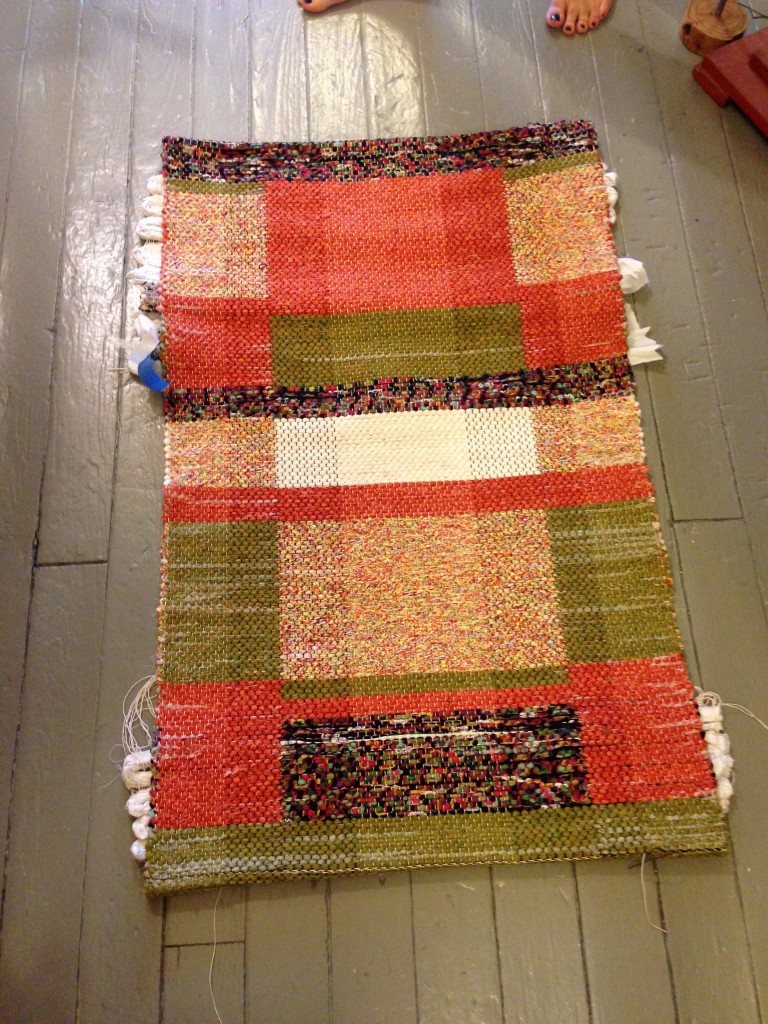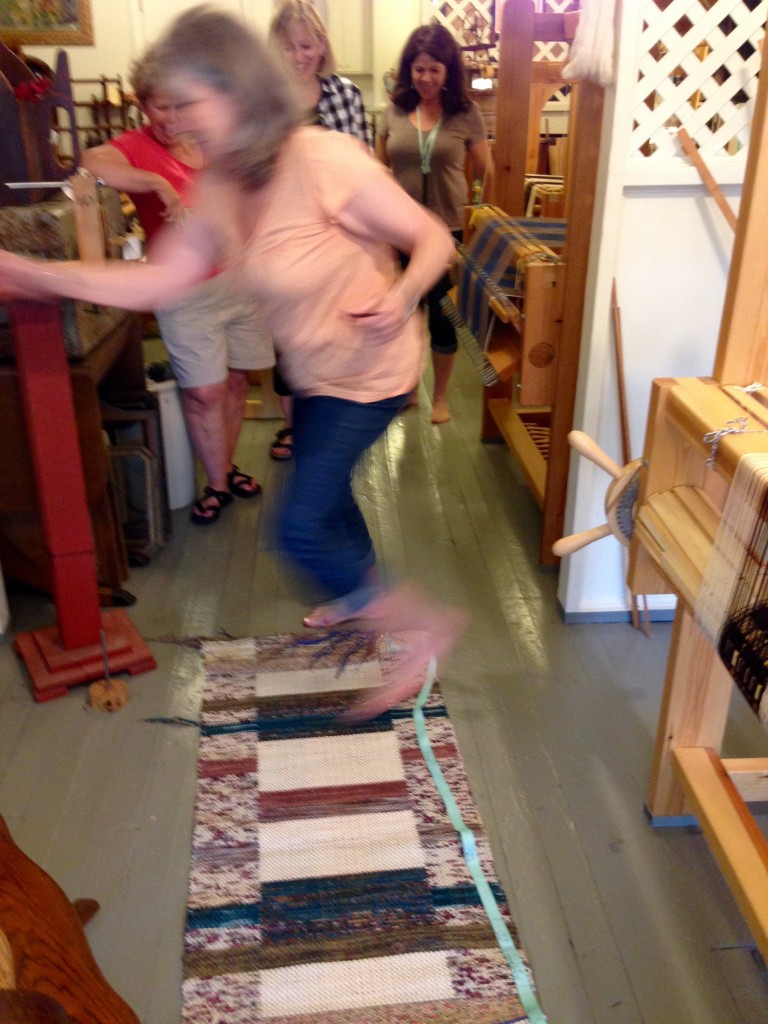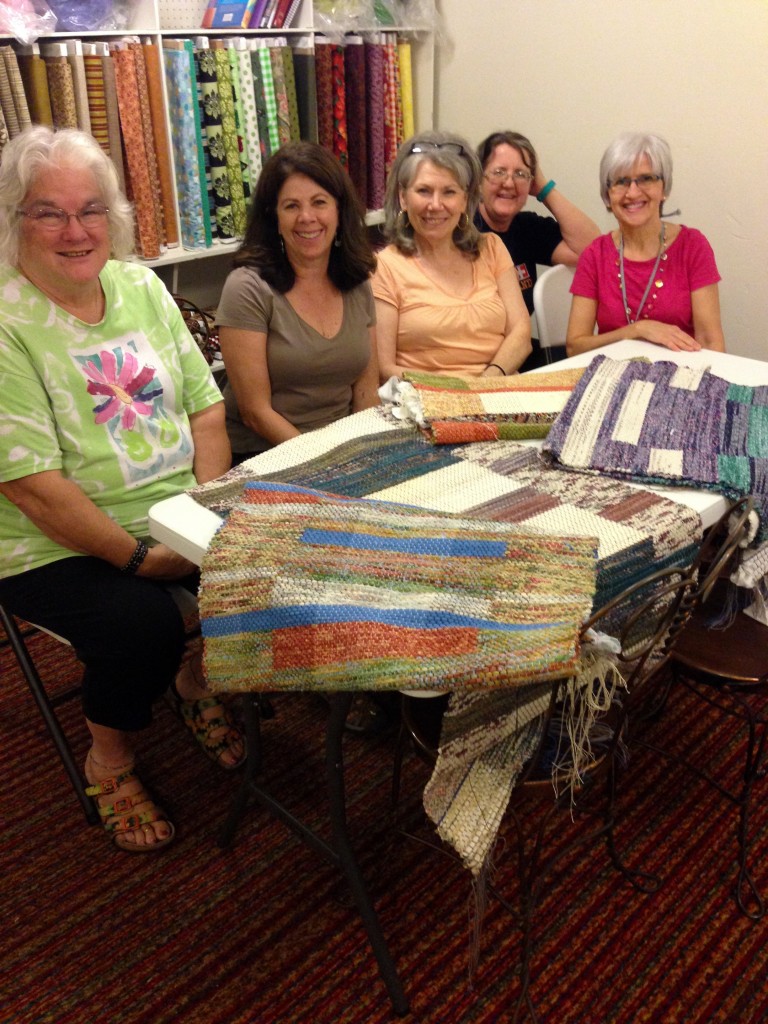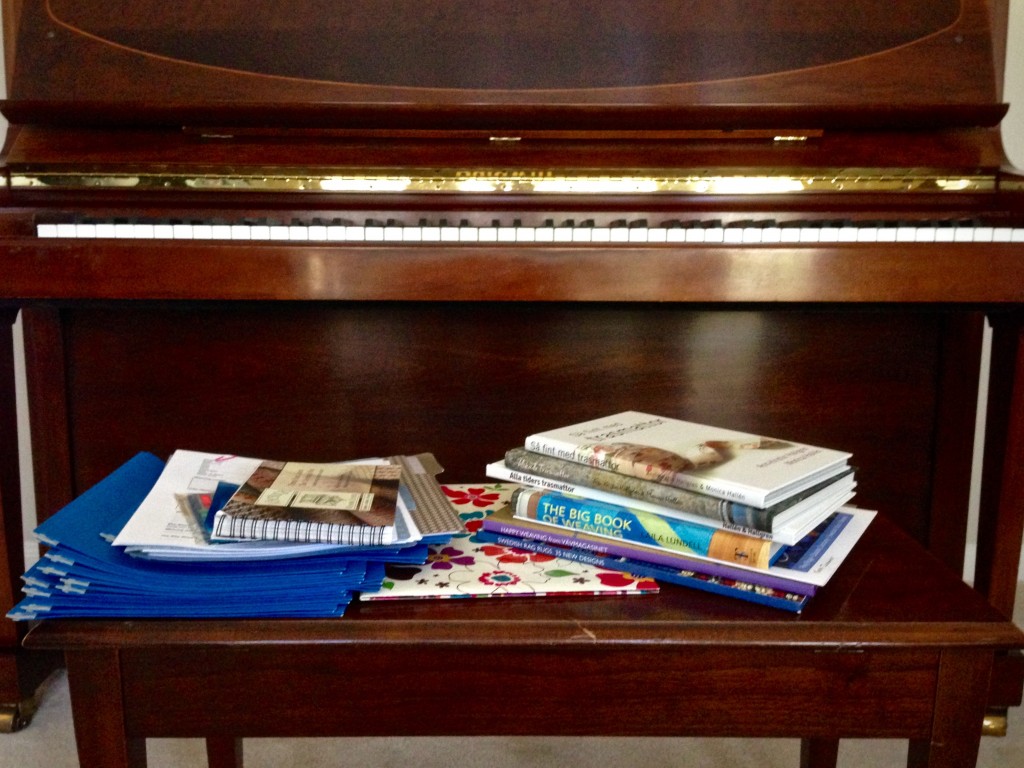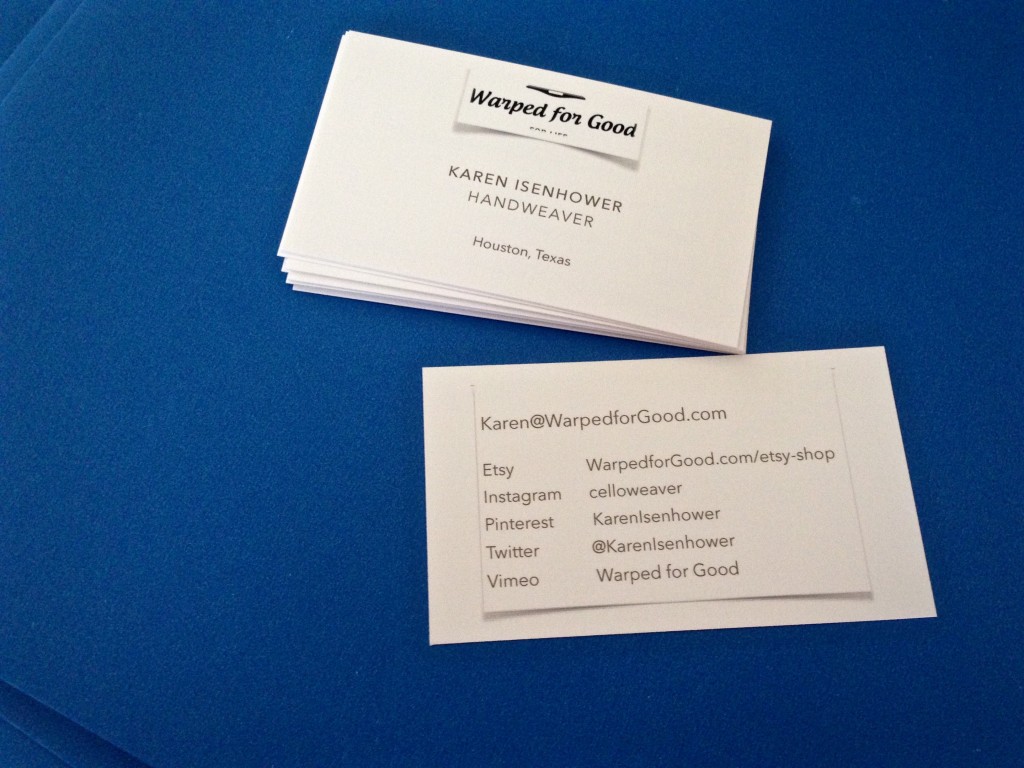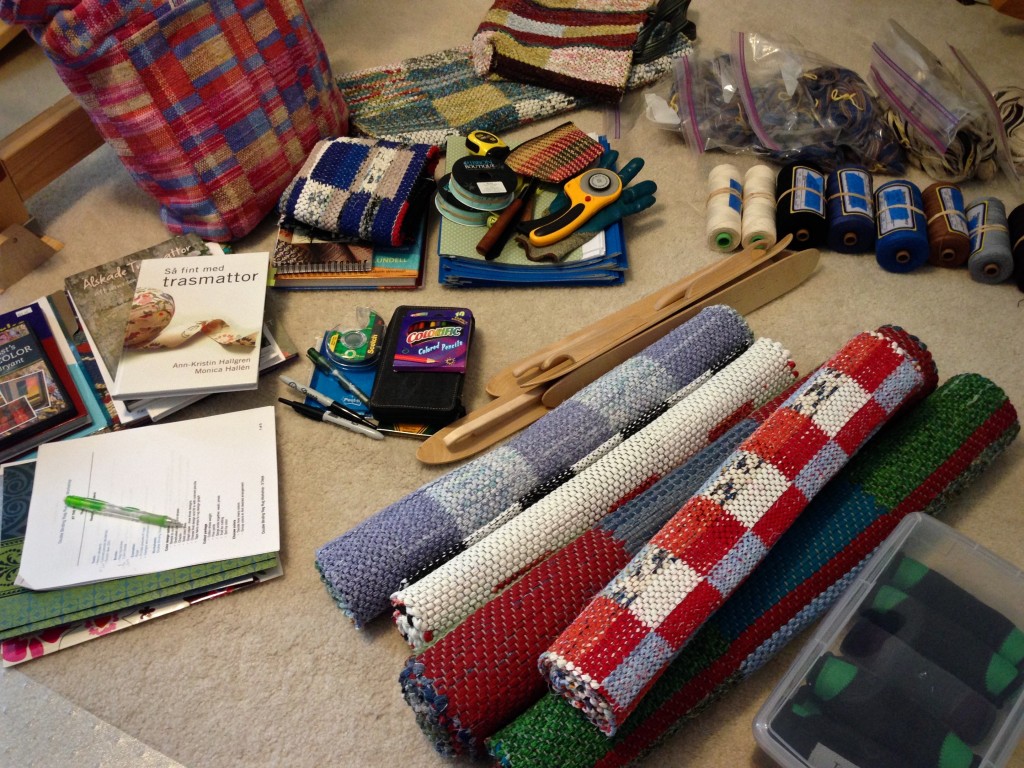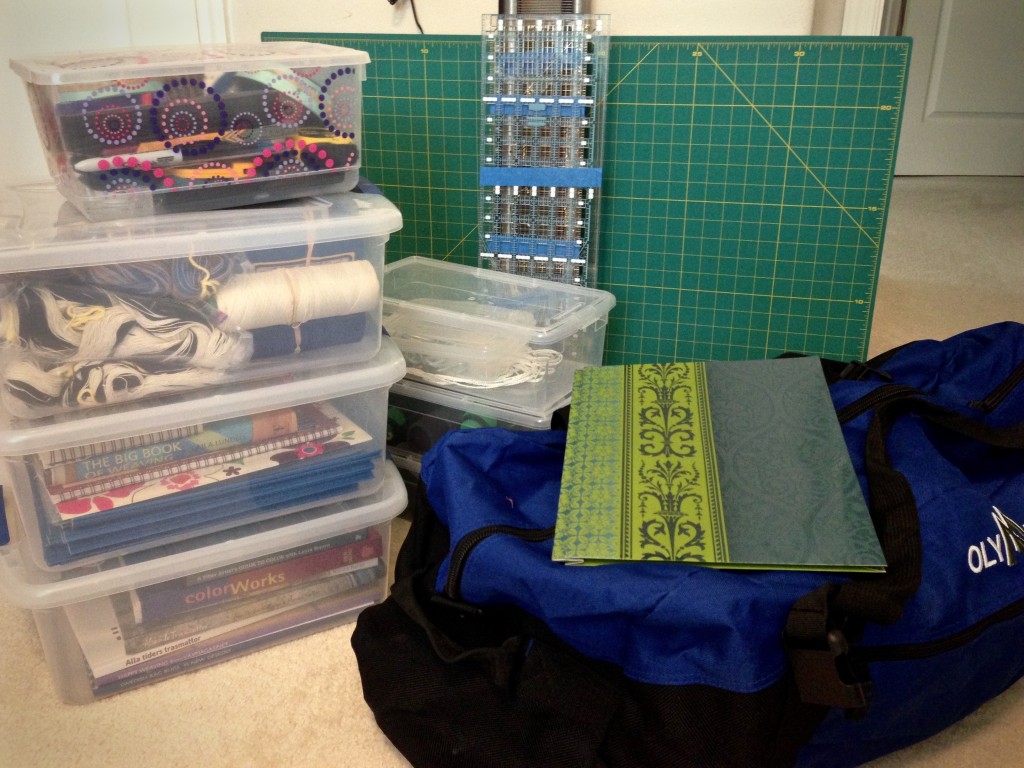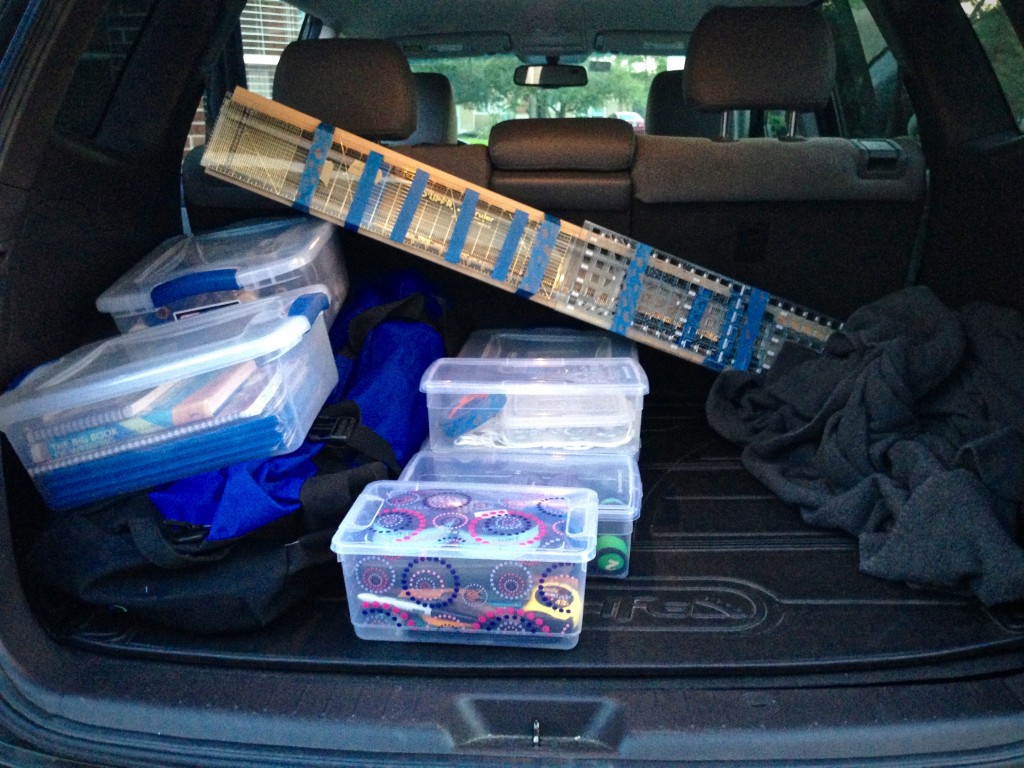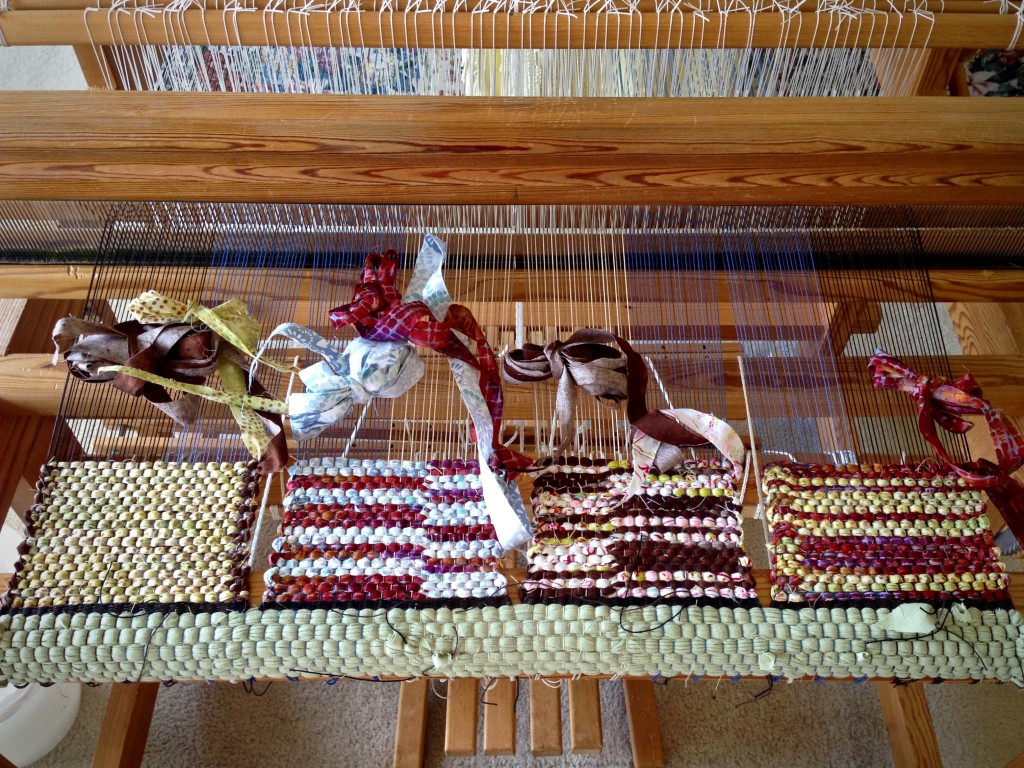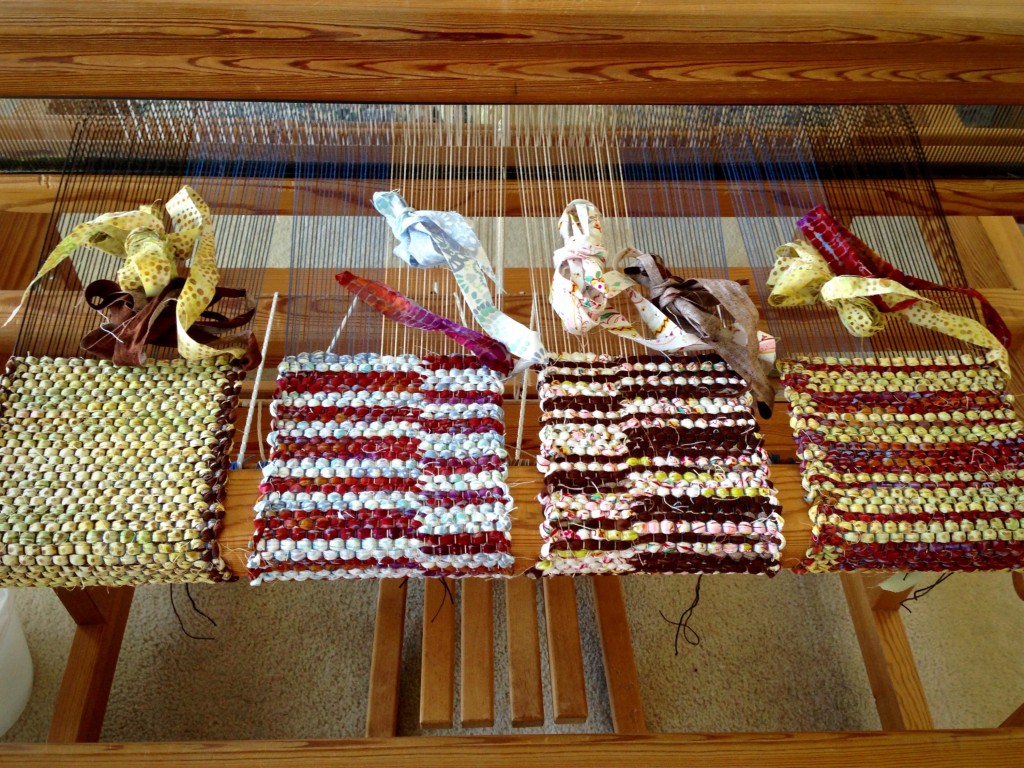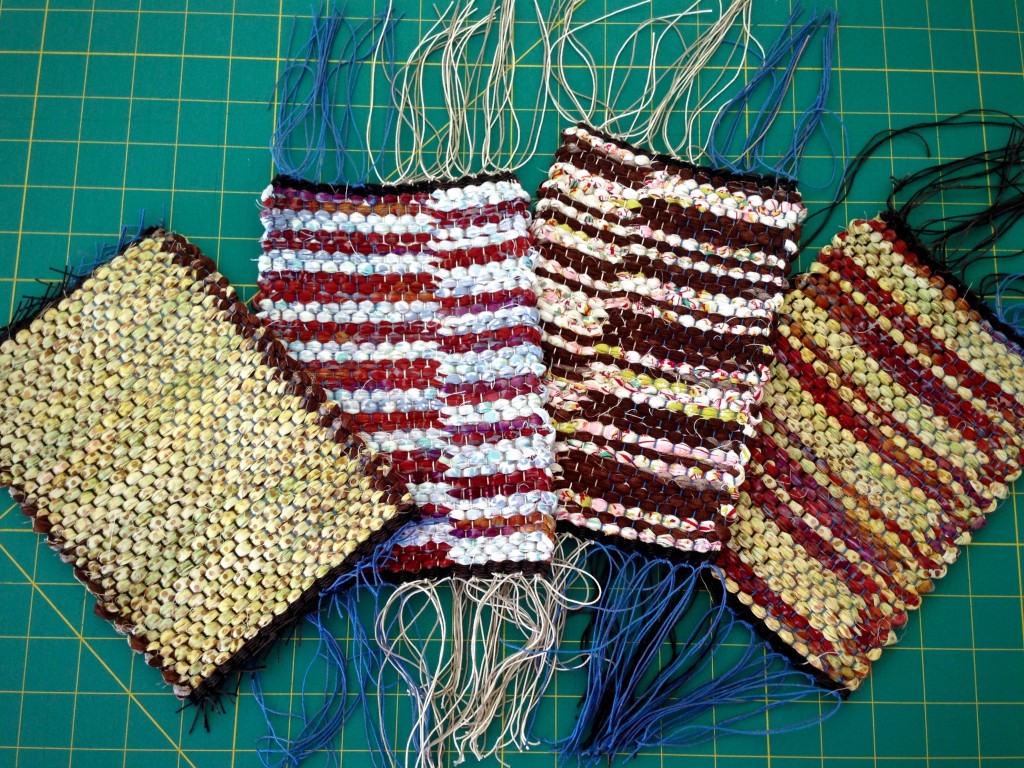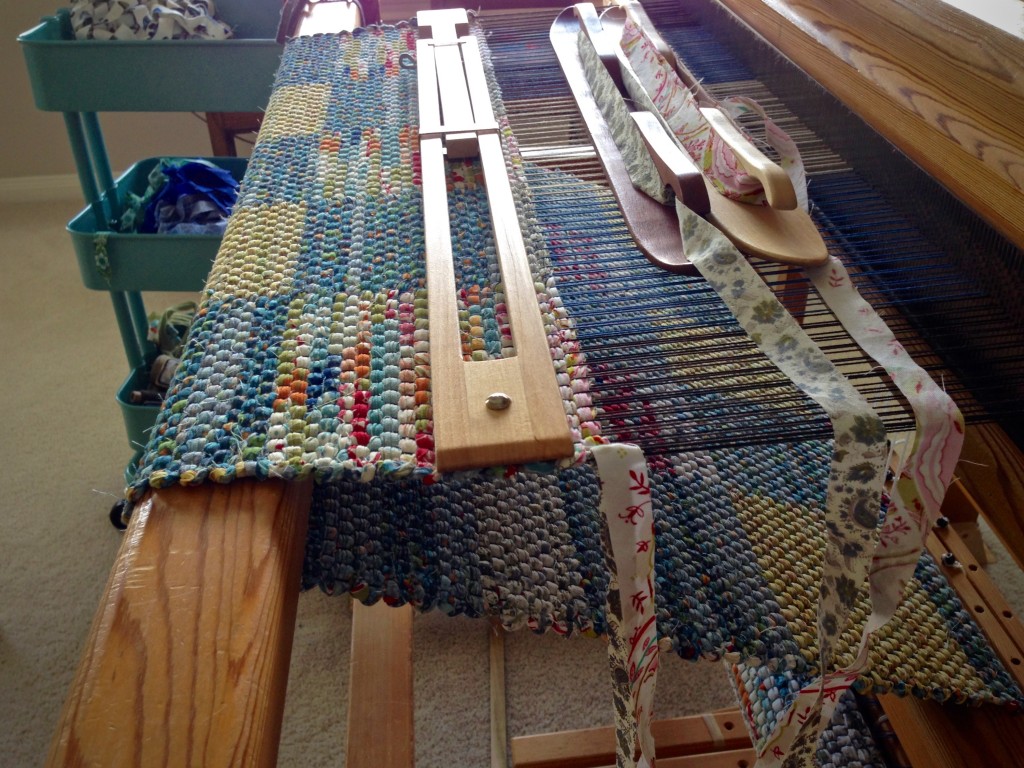Come with me to the quaint little town of Eureka Springs, nestled in the heart of the Ozark Mountains of Northwest Arkansas. First, we need to prepare and pack up. Then, enjoy the day-long drive. Put rug warp on six looms (five of them Glimåkras!) with Debbie Davis and me. And then, greet each eager weaver the next day and enjoy the process of creating special patterned rag rugs together.
Sit on the porch swing with me at the serene cabin secluded in the woods, and do some small frame tapestry while Steve whittles out more little men.
Then, greet the second round of weavers, and be sure to congratulate each one on their fabulous work. Drive home to Texas with me and let’s recount all the blessings–the kind and interesting people we met and all the fun we had!

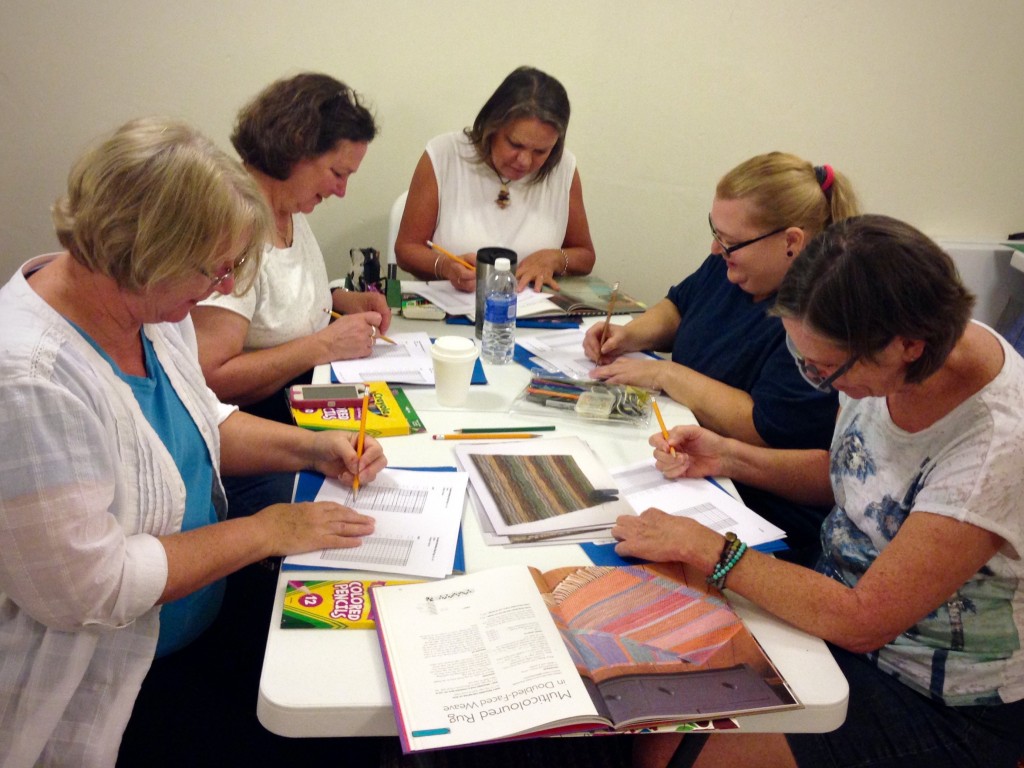
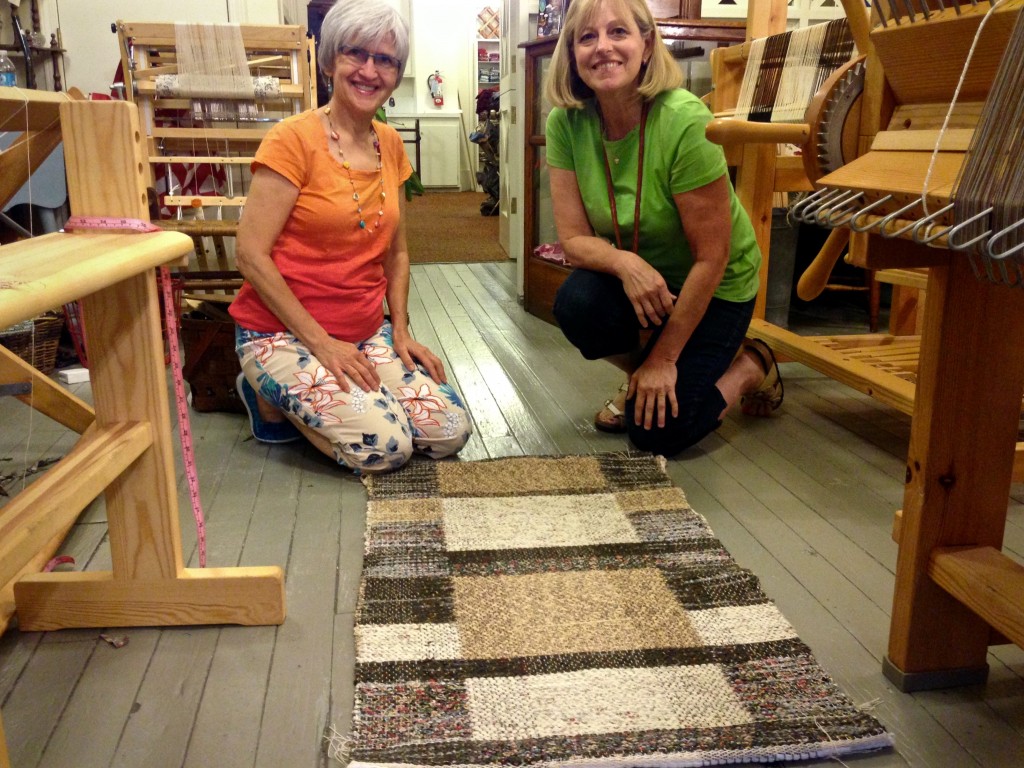
Double Binding Rag Rug Workshop 2015 from Warped for Good on Vimeo.
May you enjoy the results of your efforts.
Happy Weaving,
Karen

